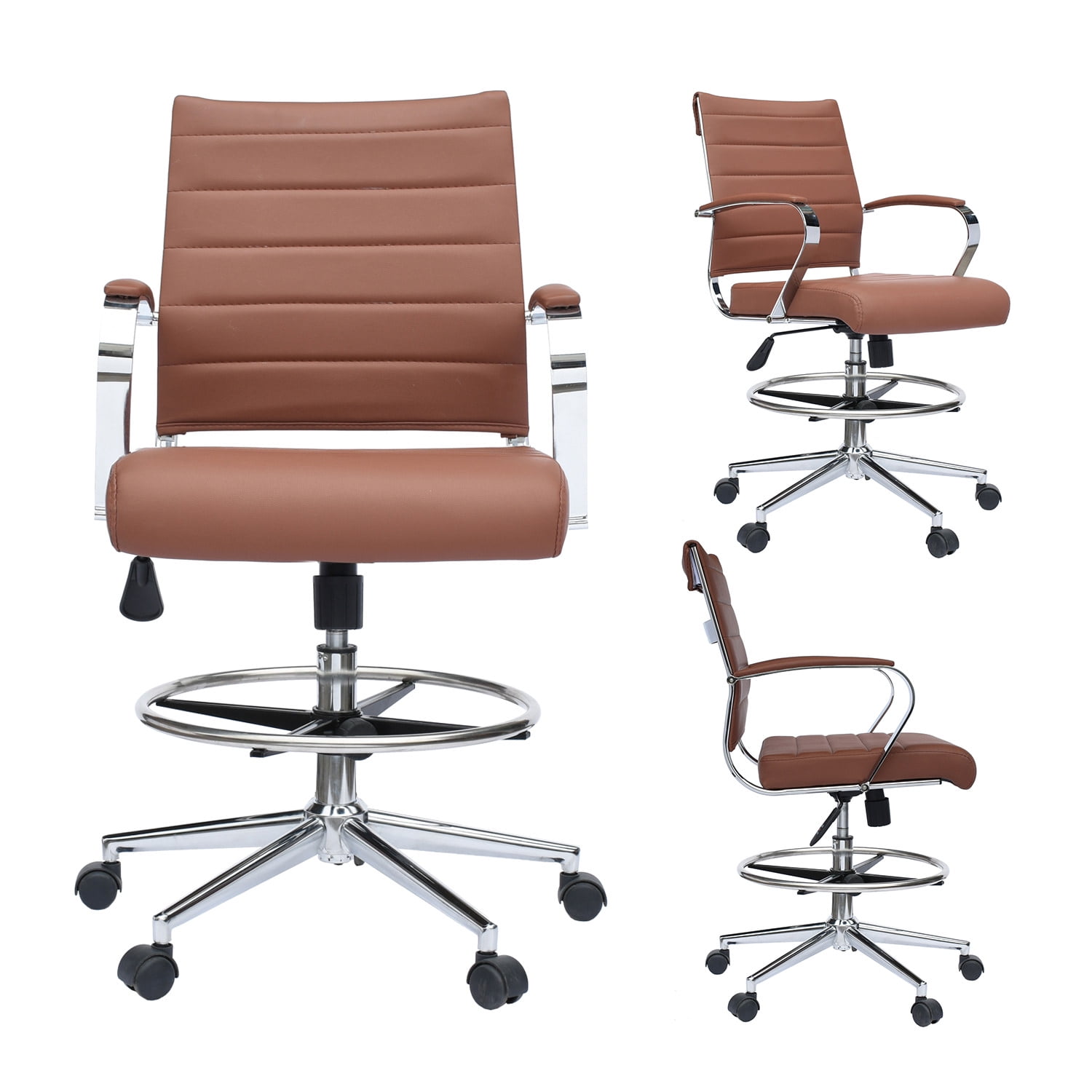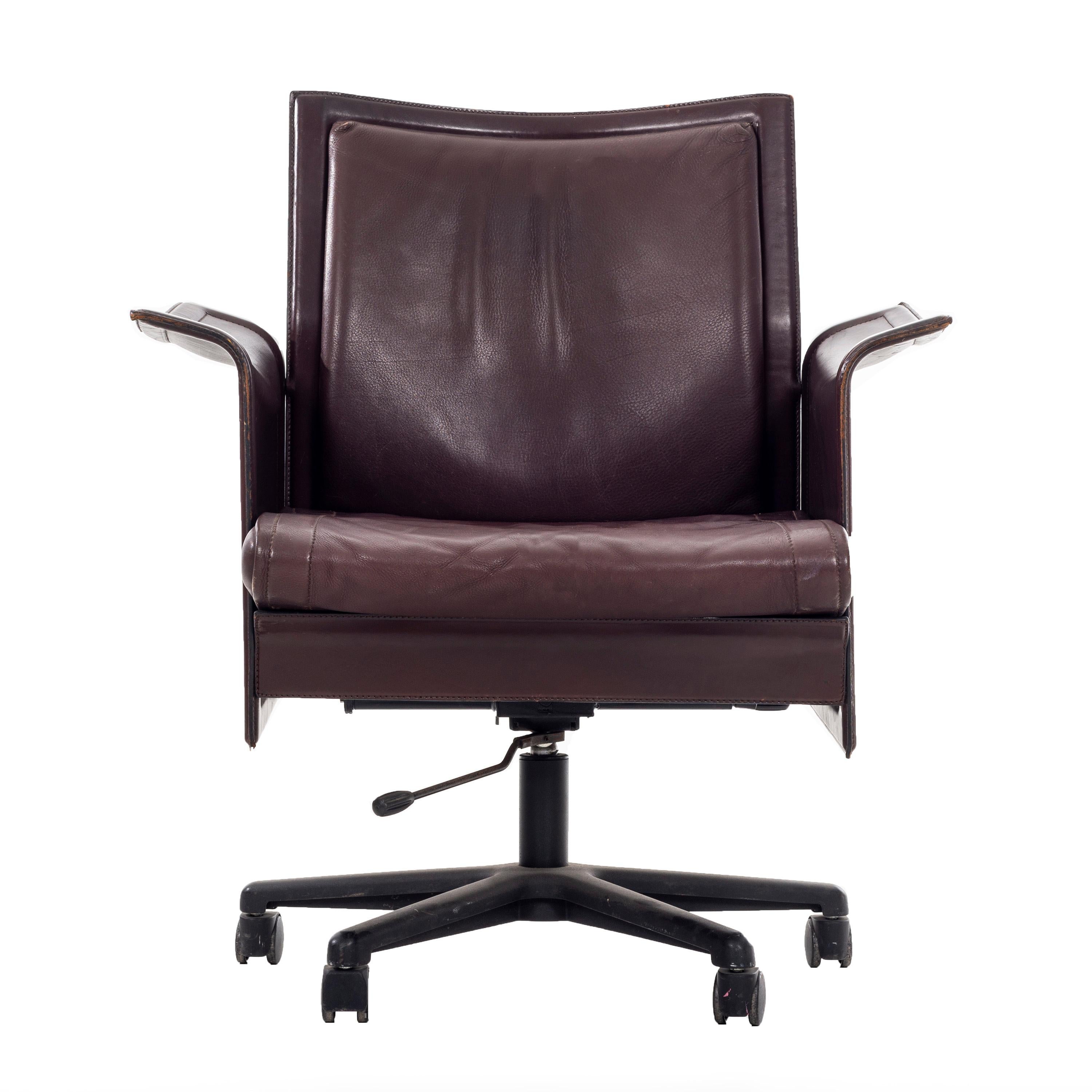Design & Aesthetics of Leather and Chrome Desk Chairs

The marriage of supple leather and gleaming chrome in desk chair design creates a striking visual impact, blending comfort with a modern, sophisticated aesthetic. This combination offers a wide range of stylistic possibilities, from classic and traditional to contemporary and minimalist. The choice of leather type, chrome finish, and color palette significantly influences the overall feel and perceived quality of the chair.
Leather Types and Their Impact
The type of leather used profoundly affects both the look and longevity of a leather and chrome desk chair. Different tanning processes and levels of finishing create distinct textures and durability levels.
| Leather Type | Characteristics | Appearance | Durability |
|---|---|---|---|
| Full-Grain Leather | Contains all the natural layers of the hide, including imperfections. | Unique, natural markings; develops a rich patina over time. | Most durable; resistant to scratches and wear. |
| Top-Grain Leather | Top layer of the hide, with imperfections sanded smooth. | Smooth, consistent texture; less natural variation. | Durable, but less so than full-grain; more susceptible to damage. |
| Genuine Leather | Made from the lower layers of the hide, often split and treated. | More uniform appearance; may feel thinner and less supple. | Least durable; prone to cracking and tearing. |
| Bonded Leather | Leather scraps bonded together with polyurethane. | Synthetic feel; often less breathable. | Least durable; easily damaged. |
Chrome Accents and Finishes
Chrome accents are crucial in defining the overall aesthetic of a leather and chrome desk chair. The finish significantly impacts the chair’s visual appeal.
| Chrome Finish | Appearance | Visual Effect |
|---|---|---|
| Polished Chrome | Highly reflective, mirror-like surface. | Creates a sleek, modern, and sometimes glamorous look. |
| Brushed Chrome | Subdued shine; fine lines visible on the surface. | Offers a more understated, sophisticated, and less reflective look. |
| Satin Chrome | Smooth, matte finish with a soft sheen. | Provides a balanced look between polished and brushed chrome, more subtle and elegant. |
Color Combinations and Visual Impact, Leather and chrome desk chair
The interplay between leather color and chrome finish dramatically alters the chair’s visual personality.
| Leather Color | Chrome Finish | Visual Impact |
|---|---|---|
| Black Leather | Polished Chrome | Classic, sophisticated, and formal; a timeless combination. |
| Brown Leather | Brushed Chrome | Warm, inviting, and slightly more relaxed; a versatile choice. |
| Burgundy Leather | Polished Chrome | Rich, luxurious, and eye-catching; creates a statement. |
| White or Beige Leather | Satin Chrome | Clean, minimalist, and modern; offers a fresh and airy feel. |
Manufacturing and Materials of Leather and Chrome Desk Chairs

The creation of a leather and chrome desk chair is a multi-stage process, blending traditional craftsmanship with modern manufacturing techniques. From the selection of raw materials to the final assembly, each step contributes to the chair’s overall quality, durability, and aesthetic appeal. Understanding this process reveals the dedication and skill involved in producing a truly exceptional piece of furniture.
Leather and chrome desk chair – The journey begins with sourcing the leather and chrome. High-quality leather chairs often utilize full-grain or top-grain leather, chosen for their durability and luxurious appearance. These hides undergo a meticulous tanning process, which involves treating them with natural or chemical tannins to preserve them and impart desired characteristics like suppleness and water resistance. The specific tanning method employed significantly impacts the final texture and longevity of the leather. The chrome, typically in the form of steel sheets, is sourced from reputable suppliers who adhere to stringent quality control standards. The thickness and composition of the steel directly affect the chair’s structural integrity and the effectiveness of the subsequent plating process.
Leather Sourcing and Treatment
Sourcing high-quality leather involves careful selection of hides based on factors such as thickness, grain consistency, and freedom from defects. Full-grain leather, considered the highest grade, retains the natural grain pattern of the hide, offering exceptional durability and a unique character. Top-grain leather, while slightly less durable, provides a smoother surface and often undergoes a correction process to minimize imperfections. After selection, the hides undergo tanning, a process that transforms raw animal hides into durable and usable leather. Vegetable tanning, a traditional method, uses natural tannins derived from plant extracts, resulting in a more environmentally friendly and often softer leather. Chrome tanning, a more efficient and widely used method, utilizes chromium salts, producing a more durable and water-resistant leather, though some environmental concerns remain. The specific tanning method chosen significantly influences the leather’s characteristics and contributes to the chair’s overall quality.
Chrome Plating Techniques
The chrome plating process is crucial for both the aesthetics and durability of the chair’s metal components. Several techniques exist, each impacting the final finish and longevity of the plating. Electroplating, the most common method, involves immersing the steel components in a bath containing chromium ions. An electric current then deposits a thin layer of chromium onto the surface. The thickness of this layer directly influences the plating’s resistance to corrosion and wear. Variations in the electroplating process, such as the use of different electrolytes or pre-treatment processes, can produce different finishes, ranging from a highly polished mirror-like shine to a more matte or satin effect. Other less common techniques might include electroless plating or physical vapor deposition, offering unique characteristics but often at a higher cost.
Chair Manufacturing Process
The manufacturing process begins with cutting the leather and chrome components according to precise patterns. The leather pieces are carefully stitched together using heavy-duty thread, creating the chair’s seat, back, and armrests. The chrome components, typically the base, arms, and possibly the chair’s frame, are then assembled. This often involves welding or other joining techniques to create a robust and stable structure. The leather upholstery is then attached to the frame, often using staples or specialized fasteners. Finally, the chair undergoes a quality control inspection to ensure it meets the required standards of durability and aesthetic appeal. The entire process, from raw materials to finished product, requires skilled labor and precise machinery, ensuring the creation of a high-quality and comfortable chair.
